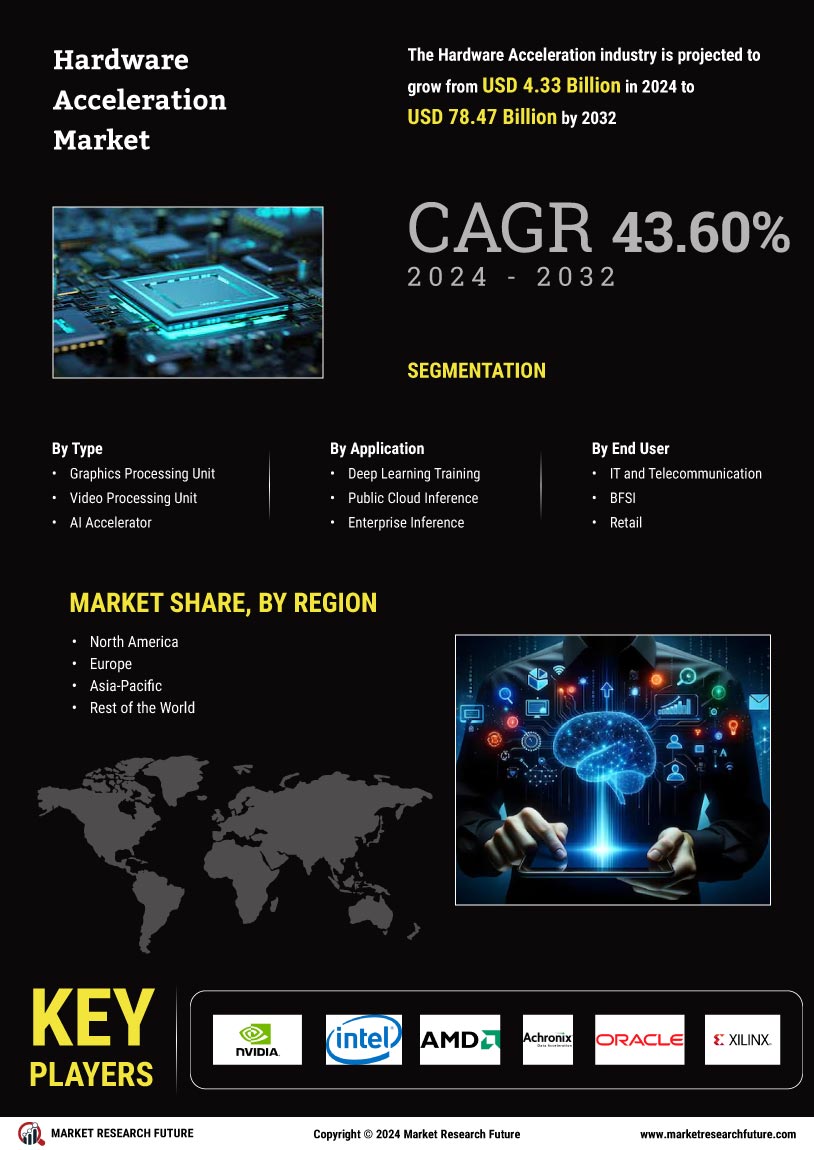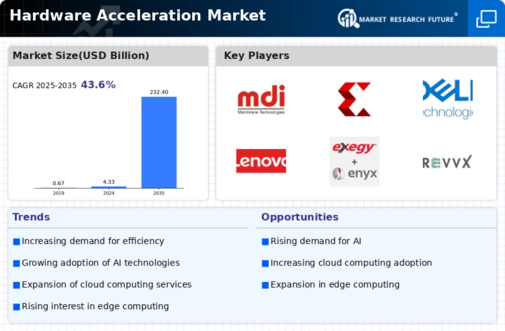Hardware Acceleration Market Summary
As per Market Research Future Analysis, the Global Hardware Acceleration Market was valued at USD 4.33 Billion in 2024 and is projected to reach USD 231.88 Billion by 2035, growing at a CAGR of 43.60% from 2025 to 2035. The market is driven by the increasing demand for hardware acceleration in video encoding, decoding, and deep learning applications. The GPU segment leads the market due to its widespread use across various industries, while the BFSI sector generates the most revenue among end users. North America dominates the market, supported by the adoption of cloud computing and hardware acceleration in data centers.
Key Market Trends & Highlights
The hardware acceleration market is witnessing significant growth driven by technological advancements and increased AI adoption.
- Market Size in 2024: USD 4.33 Billion
- Projected Market Size by 2035: USD 231.88 Billion
- CAGR from 2025 to 2035: 43.60%
- Deep Learning Training segment generated the most revenue in 2022
Market Size & Forecast
| 2024 Market Size | USD 4.33 Billion |
| 2035 Market Size | USD 231.88 Billion |
| CAGR (2024-2035) | 43.60% |
Major Players
NVIDIA Corporation, Intel Corporation, Advanced Micro Devices Inc., Achronix Semiconductor, Oracle Corporation, Xilinx Inc., IBM Corporation, Hewlett Packard Enterprise Company, Dell, Lenovo Group Limited, Fujitsu Ltd, Cisco Systems Inc., VMware Inc., Enyx, HAX, Revvx, AlphaLab Gear, HWTrek, Wazer, Teradici





















Leave a Comment